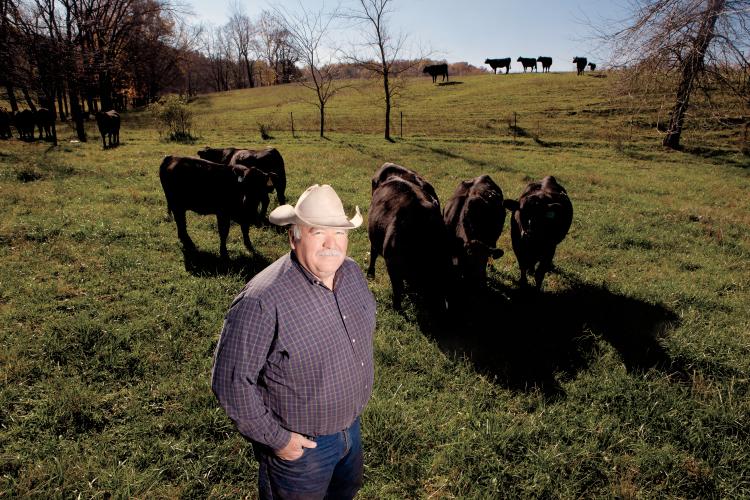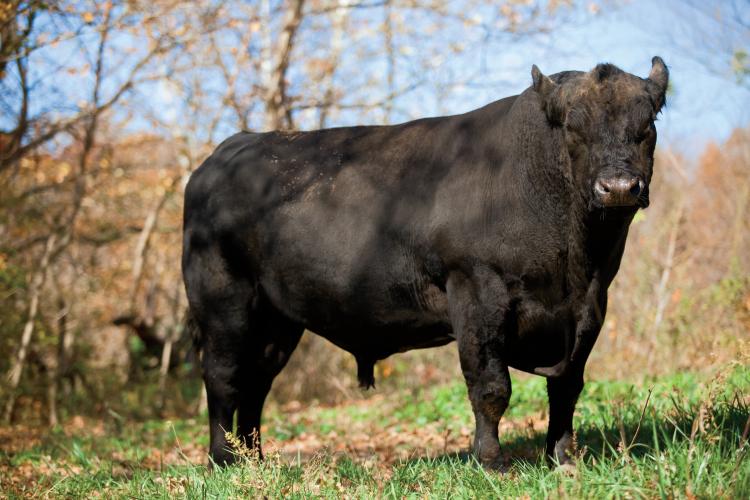Home > Missouri > Missouri Crops & Livestock > Missouri Boasts Best Beef in the Midwest
Missouri Boasts Best Beef in the Midwest

America’s Cattle Trails is a famous piece of art and history in the cattle industry, one that many cattlemen and women have hanging proudly in their homes. The print’s criss-cross pattern of colorful lines depicts the path of cattle drives across the West and illustrates the complexity of one of Missouri’s oldest traditions – producing beef.
Those famous trails helped Missouri become a hub for livestock producers and markets, and home to roughly 4 million head of beef cattle today. Missouri’s more than 70,000 livestock producers contribute nearly $1.5 billion to the state’s economy each year.
Raising high-quality beef is a longstanding tradition in Missouri, from the first purebred cattle brought into the state in 1839 to livestock as a top attraction at the first state fair to the emphasis on genetics and nutrition among producers.
Today, producers are taking that emphasis on genetics and nutrition a step farther, adding consumers’ preferences and scientific research to their business decision-making process and finding new ways to be proactive about raising high-quality beef with both the customer and animal in mind.
John Kleiboeker, executive director of the Missouri Beef Industry Council emphasizes that consumers like flavor. Consumers like juiciness. Consumers like tenderness, he says.
Mike Kasten is a cattle producer and leader of the Missouri initiative to put science into the hands of the state’s producers, and, as a result, put money into cattlemen and women’s pockets. As the program director for Missouri’s Quality Beef by the Numbers program, Kasten works to improve profitability for beef cow-calf operations and boost the production of higher grade beef in Missouri with technology.

Artificial insemination for cattle has been available for the last half century, but less than 10 percent of the nation’s beef cattle are bred using the technology. The Quality Beef by the Numbers program is working hard to raise that percentage.
The University of Missouri’s Thompson Research Farm has been implementing research-driven artificial insemination of its cattle for several years, resulting in multiple generations of cattle bred for premium marbling. The initiative has achieved staggering results: 31 percent of steers graded high choice prime, when the national average for that grade is only 3 percent. Higher grades translate into higher profits for producers.
Scott Brown, an agricultural economist with the University of Missouri, described the Quality Beef by the Numbers program as the opportunity to make certain that your steak is the one being eaten at high-quality restaurants, and that your steak is the one providing consumers a premium eating experience.
Kasten, a lifelong farmer, has been using artificial insemination on his herd of 350 Angus cattle for nearly 40 years and keeps extensive records on his cattle. That emphasis on genetics helped Kasten learn that his most valuable cow, based on the value of her calves, was the result of five generations of artificial insemination from superior sire semen. It also helped him gain recognition among producers as a pioneer in breeding high-quality beef through technology.
“Our niche is producing high-quality beef,” Kasten says. “Between the United States and Canada, we produce 94 percent of the high-quality beef in the world. We can do it better than anyone, and that’s our strength.”
Kasten says when you are on top of the world market like Missouri beef is, you have you keep working to stay there.
“This is the perfect opportunity for smaller producers to be able to tap into technologies and new markets,” Kasten says. “If you’re not involved in a program like this, you’re going to find out in the future that you’re way behind the ball.”



